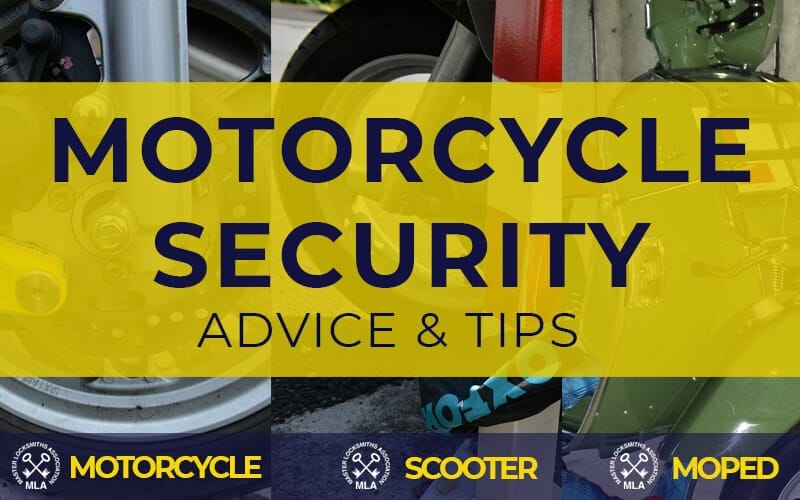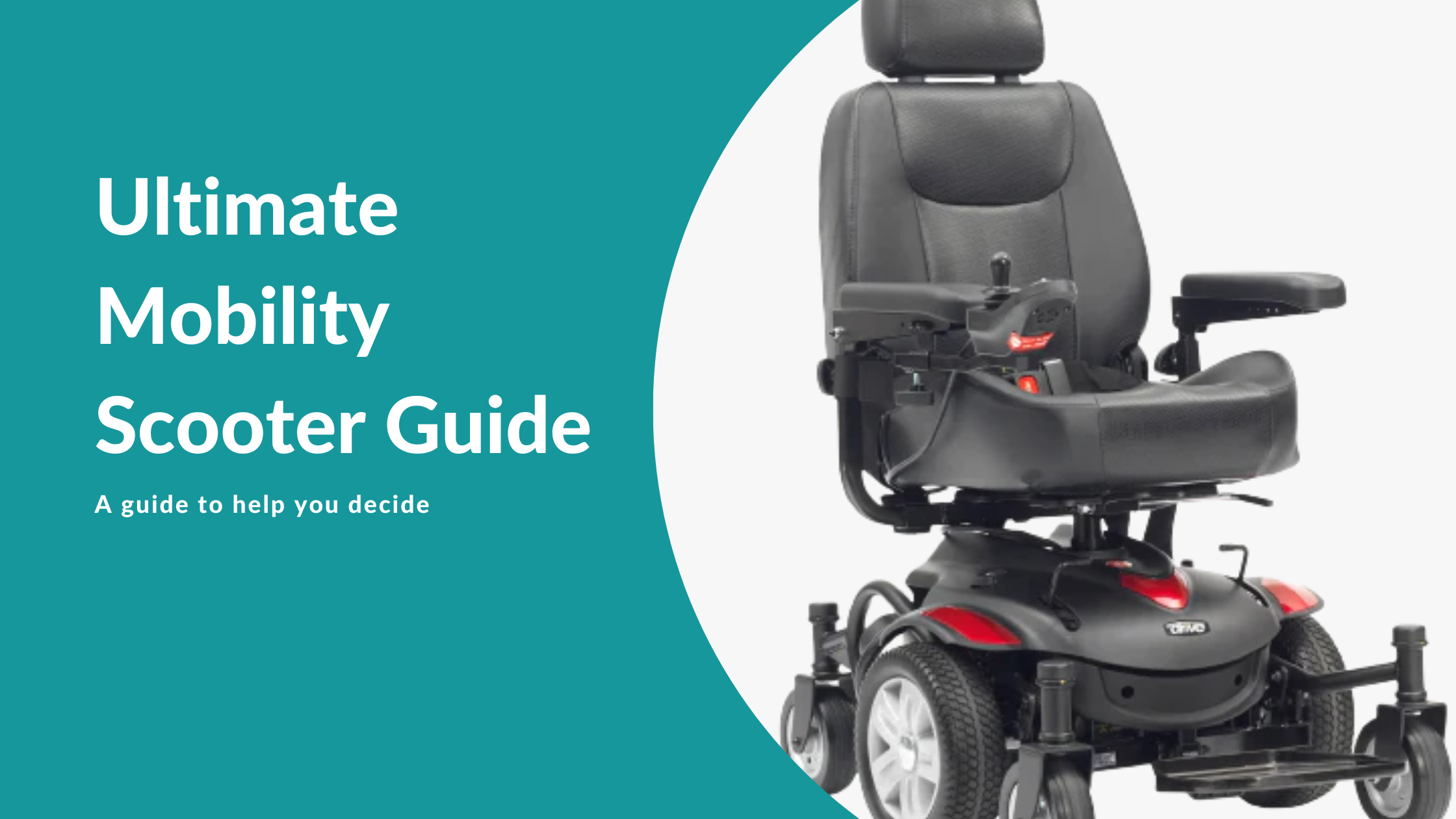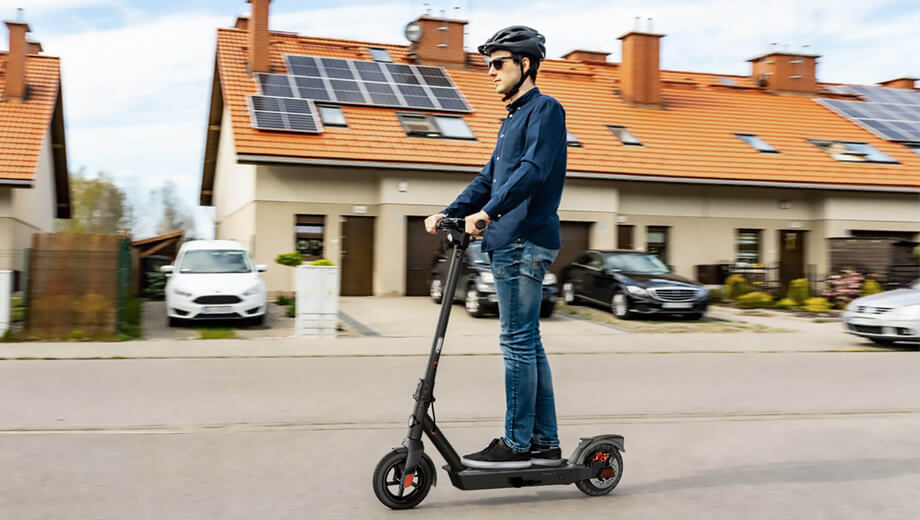Scooters are an efficient and affordable mode of transportation, offering easy maneuverability and low maintenance requirements. In recent years, their popularity has grown significantly due to their eco-friendly nature and convenience.
They are suitable for short commutes and are a great alternative to cars and public transportation. We will explore some frequently asked questions (FAQs) about scooters, providing clear and concise answers to help you understand everything you need to know before making a purchase or using one for the first time.
Getting Started
Welcome to our comprehensive FAQs for scooters! If you’re new to the world of scooters or thinking about getting one, you’ve come to the right place. In this section, we’ll cover the basics and help you understand what a scooter is and why it might be the perfect choice for you. So let’s dive in!
What Is A Scooter?
A scooter is a two-wheeled vehicle that is powered by either gas, electricity, or in some cases, human effort. It is generally smaller and more lightweight than a motorcycle, making it easier to maneuver and park. Scooters typically have a step-through frame design, with a platform for the rider’s feet, and a small engine or motor for propulsion.
Scooters are a popular mode of transportation in urban areas due to their fuel efficiency and compact size. They offer a cost-effective and eco-friendly way to get around town, whether it’s for commuting to work, running errands, or simply enjoying a leisurely ride.
Why Should I Choose A Scooter?
There are several reasons why you should consider choosing a scooter:
- Fuel efficiency: Scooters are known for their excellent fuel efficiency, which can save you money in the long run. Whether you opt for a gasoline-powered scooter or an electric one, you can expect impressive mileage.
- Easy to ride: Scooters are designed with ease of use in mind. They typically have automatic transmissions, so you don’t have to worry about shifting gears. This makes them ideal for beginners or those who prefer a hassle-free riding experience.
- Convenience: Scooters are perfect for navigating through crowded city streets and dealing with limited parking spaces. Their compact size allows you to easily maneuver in traffic and find parking spots that would be inaccessible to larger vehicles.
- Environmentally friendly: As society becomes more conscious of the environment, many people are turning to eco-friendly transportation options. Scooters produce fewer emissions compared to cars or motorcycles, making them a greener choice for commuting.
- Cost-effective: Scooters are generally more affordable than cars or motorcycles. In addition to the initial purchase price, they also offer lower maintenance and insurance costs. This makes them a budget-friendly option for individuals or families.
These are just a few reasons why scooters have gained popularity in recent years. With their combination of convenience, affordability, and eco-friendliness, they offer a smart transportation alternative for both urban dwellers and rural residents.
Now that you have a better understanding of what a scooter is and why it might be the right choice for you, let’s move on to our next frequently asked question: How to choose the right scooter? Stay tuned!

Credit: www.locksmiths.co.uk
Types Of Scooters
If you are considering purchasing a scooter but are confused about the different types available, this article is for you! In this section, we will explore the various types of scooters, including kick scooters and electric scooters, giving you a comprehensive overview of each.
Kick Scooters
Kick scooters are the most basic and popular type of scooter. They are propelled by a rider pushing off the ground with their foot. These scooters typically have a deck for the rider to stand on, along with two wheels and handlebars for steering. Kick scooters are great for short-distance commuting and recreational use. They are lightweight, portable, and easy to maneuver. Kick scooters are suitable for people of all ages, making them a versatile option.
Electric Scooters
If you’re looking for a scooter that provides a boost of power, an electric scooter is the way to go. Electric scooters are equipped with a small electric motor, powered by a rechargeable battery. They are a convenient and eco-friendly mode of transportation, as they produce zero emissions. Electric scooters are perfect for longer commutes and urban travel. With their adjustable speed settings and longer battery life, electric scooters offer a smooth and efficient ride. These scooters also often come with additional features such as headlights, taillights, and suspension for enhanced safety and comfort.
Choosing The Right Scooter
Looking for answers to your scooter FAQs? Find the right scooter by considering factors like size, weight, battery life, and terrain compatibility. Maximize your scooter experience with the perfect fit for your needs.
Choosing the right scooter can be a daunting task, especially with the numerous options available in the market today. With various brands, models, and features to consider, it’s essential to make an informed decision that suits your needs and preferences. In this section, we’ll discuss the factors to consider and provide some helpful tips for selecting the perfect scooter.
Factors To Consider
When it comes to choosing the right scooter, several factors deserve your attention. By carefully considering these factors, you can ensure that the scooter you select meets your expectations and delivers an enjoyable riding experience. So, what are the key factors to keep in mind?
1. Intended Use
Are you planning to use the scooter for your daily commute, leisure rides, or both? Understanding the primary purpose of your scooter will help you determine the most suitable features and specifications. For daily commutes in urban areas, lightweight scooters with excellent maneuverability and efficient battery life may be preferable. On the other hand, if you’re looking for a scooter for leisure rides, you might prioritize comfort, stability, and the ability to handle rough terrains.
2. Range and Battery Life
How far do you plan to travel on your scooter? The range and battery life of a scooter play a significant role in determining its usability. Consider your typical travel distance and ensure that the scooter you choose can cover that distance comfortably without requiring frequent recharging. Keep in mind that the range may also be affected by factors such as terrain, rider weight, and speed.
3. Speed
Are you looking for a scooter with a particular speed range? Some scooters are designed for leisurely rides, while others offer more power and higher maximum speeds. Consider your comfort level and local regulations when deciding on the desired speed range for your scooter.
4. Size and Weight
Do you need a lightweight and compact scooter for easy maneuverability and storage? Size and weight are crucial factors to consider, especially if you have limited storage space or need to carry your scooter on public transportation. Lightweight scooters are often more agile, making them suitable for navigating crowded city streets.
Tips For Selecting The Perfect Scooter
Now that we’ve explored the essential factors, let’s delve into some useful tips to help you narrow down your choices and find the perfect scooter.
- Research different brands and models: Take the time to explore various scooter brands and models. Read reviews, compare features, and consider reliability and after-sales service.
- Test ride if possible: If possible, test ride different scooters to get a feel for their handling, comfort, and overall experience. This will give you a better idea of which scooter suits you best.
- Consider your budget: Determine your budget range and focus on scooters within that range. Remember to consider long-term costs like maintenance and replacement parts.
- Check for safety features: Ensure that the scooter you choose has essential safety features such as lights, reflectors, and effective braking systems. These features are crucial for your safety on the road.
- Read user reviews: User reviews can provide valuable insights into the real-life experiences of scooter owners. Pay attention to both positive and negative feedback to get a balanced perspective.
In conclusion
By considering the factors mentioned above and following these tips, you’ll be well-equipped to choose the right scooter for your needs. Remember, finding the perfect scooter may take some time and research, but the end result will be worth it as you ride with confidence and enjoy every journey.
Safety Measures
When it comes to riding a scooter, it’s essential to prioritize safety. Whether you’re a beginner or an experienced rider, taking the necessary safety measures will help ensure a smooth and secure ride. In this section, we’ll discuss the importance of safety gear and provide some tips on how to ride safely.
Importance Of Safety Gear
One of the key safety measures when riding a scooter is wearing appropriate safety gear. Wearing the right gear can help protect you in case of accidents or falls. Here are some important pieces of safety gear every scooter rider should consider:
| Safety Gear | Description |
|---|---|
| Helmet | A helmet is the most crucial safety gear for scooter riders. It protects your head from potential injuries in case of accidents and should be worn at all times. |
| Knee and Elbow Pads | These protective pads absorb impact and prevent injuries to your knees and elbows. They are especially beneficial for riders who perform tricks or ride at higher speeds. |
| Gloves | Wearing gloves not only enhances your grip on the handlebars but also provides protection to your hands in case of falls or scrapes. |
| Shoes | Opt for sturdy and closed-toe shoes that provide good traction. Avoid sandals or flip flops that can increase the risk of slipping. |
| Reflective Clothing | Wearing reflective clothing makes you more visible to other road users, especially when riding during low-light conditions. |
How To Ride Safely
While safety gear is crucial, adopting safe riding practices is equally important. Here are some tips to help you ride your scooter safely:
- Inspect your scooter: Before every ride, check your scooter for any loose or damaged parts, test the brakes, and ensure the tires are properly inflated.
- Be aware of your surroundings: Stay attentive and constantly scan your environment for potential hazards such as pedestrians, vehicles, or uneven surfaces.
- Follow traffic rules: Always adhere to traffic rules and regulations. Observe speed limits, stop at red lights, and yield to pedestrians.
- Signal your intentions: Use hand signals to indicate your turns or intentions to other road users. This will help prevent accidents and ensure clear communication.
- Maintain a safe distance: Keep a safe distance from vehicles and other riders to allow for unexpected stops or maneuvers.
- Avoid distractions: Do not use your phone or any other devices while riding. Distractions can impair your judgment and increase the risk of accidents.
- Ride within your limits: Know your skill level and ride at a speed and difficulty level that you are comfortable with. Gradually challenge yourself as you gain more experience.
- Stay visible: Wear bright or reflective clothing, especially when riding at night or in low-light conditions, to increase your visibility to other road users.
By following these safety measures and practicing caution while riding, you can enjoy your scooter experience while minimizing the risk of accidents or injuries.
Maintenance And Care
Maintaining your scooter is essential for ensuring its longevity and optimal performance. By following regular maintenance routines and implementing effective cleaning and storage practices, you can keep your scooter in top shape for years to come.
Regular Maintenance
Regular maintenance is crucial to keep your scooter running smoothly. Here are the key maintenance tasks you should perform:
- Inspect and tighten: Check for any loose bolts or fasteners and tighten them as necessary. This helps prevent any parts from coming loose while you’re riding.
- Check brakes: Regularly inspect your scooter’s brakes to ensure they are functioning properly. Replace brake pads if they are worn out.
- Monitor tire pressure: Keep an eye on the tire pressure and maintain it at the recommended level. Underinflated or overinflated tires can impact your scooter’s performance and safety.
- Monitor battery health: If your scooter has a battery, regularly check its charge level and recharge it as needed. Replace the battery when it no longer holds a charge effectively.
Cleaning And Storage Tips
Cleaning your scooter regularly helps prevent dirt and grime buildup, keeping it looking good and functioning optimally. Additionally, proper storage helps protect your scooter from damage. Follow these cleaning and storage tips:
Cleaning:
- Use mild detergent: When cleaning your scooter, mix a mild detergent with water and use a soft cloth or sponge to wipe down the body, handlebars, and other surfaces. Avoid abrasive cleaners that can scratch the paint.
- Clean the wheels: Use a brush to remove any debris from the wheels and check for any stones or objects lodged in the treads. This ensures smooth and safe rides.
- Dry thoroughly: After cleaning, make sure to dry your scooter thoroughly before storing or using it. This helps prevent rust and corrosion.
Storage:
- Choose a dry location: Store your scooter in a dry, protected area to prevent exposure to moisture and the elements. This helps maintain its integrity and prevents rusting.
- Avoid extreme temperatures: Extreme heat or cold can damage certain components of your scooter. Avoid storing it in areas with drastic temperature changes.
- Protect it from UV rays: If your scooter is exposed to direct sunlight during storage, consider using a cover or parking it in a shaded area. This helps prevent color fading and other sun-related damage.
By following these maintenance and care tips, you can keep your scooter in excellent condition, ensuring a smooth and enjoyable riding experience every time.
Common Issues And Troubleshooting
When it comes to owning a scooter, it’s important to be prepared for common issues that may arise. From battery problems to brake issues and flat tires, understanding how to troubleshoot these concerns can save you time and money. In this section, we will explore the most common problems faced by scooter owners and provide simple solutions to get you back on the road quickly.
Battery Problems
If you’re experiencing battery problems with your scooter, there are a few potential causes to consider. First, check if the battery is properly connected. Loose connections may prevent the scooter from starting or cause it to lose power while in use. Make sure the battery terminals are securely tightened and free from any corrosion.
A second possibility is that the battery itself may need to be replaced. Over time, scooter batteries can degrade and lose their ability to hold a charge. If you’ve had your scooter for a while and notice that it’s not holding a charge as well as it used to, it may be time for a new battery. Consult your scooter’s manual or contact the manufacturer for specific instructions on replacing the battery.
Brake Issues
Brake issues can greatly impact the safety and performance of your scooter. If you notice that your scooter’s brakes are not functioning properly, it’s important to address the problem immediately. One common issue is brake pads that have worn down over time. Overuse and general wear and tear can cause the brake pads to become thin, reducing their effectiveness.
- Inspect the brake pads to see if they need replacing. If the pads are less than 1/8 inch thick, it’s time for a replacement.
- Another potential issue is air in the brake lines. This can cause the brakes to feel spongy or unresponsive. In this case, bleeding the brake lines may be necessary to remove the trapped air.
Flat Tires
A flat tire can be a frustrating issue to deal with as a scooter owner. Fortunately, there are a few steps you can take to quickly resolve this problem. First, visually inspect the tire for any visible punctures or damage. If a puncture is found, it may be possible to repair the tire with a patch kit.
If the tire cannot be repaired or you need a quick fix, consider carrying a spare inner tube or tire repair kit with you. These can come in handy in emergency situations and allow you to quickly replace a flat tire on the go. Remember to always inflate your tires to the correct pressure as specified in your scooter’s manual to prevent future flats.
Legality And Regulations
When it comes to riding scooters, it’s important to stay informed of the various legality and regulations that exist in different countries. Not only will this help you avoid any legal trouble, but it will also ensure your safety on the roads. In this section, we’ll discuss the scooter laws in different countries and the rules and regulations you need to follow.
Scooter Laws In Different Countries
Before hopping on your scooter, it’s crucial to familiarize yourself with the local laws and regulations of the country you’re in. These laws can vary significantly from one region to another, so it’s essential to conduct thorough research to stay in compliance. Here is a glimpse of some scooter laws in different countries:
| Country | Scooter License Requirement | Maximum Speed Limit | Additional Regulations |
|---|---|---|---|
| United States | Valid driver’s license | Varies by state | – Scooter must be street-legal – Helmet may be required – Follow traffic laws |
| United Kingdom | Provisional motorcycle license (AM category) | 13.5 mph (21.7 km/h) | – Scooter must be registered and taxed – Must wear a helmet – Follow road traffic laws |
| Germany | Moped license (class AM) | 28 mph (45 km/h) | – Scooter must have appropriate safety equipment – Must wear a helmet – Follow road rules |
These are just a few examples, and it’s essential to research specific laws for the country you’re planning to ride a scooter in. Remember, the laws can change over time, so it’s always best to stay up to date with any new regulations.
Rules And Regulations To Follow
Regardless of the country you’re in, there are some common rules and regulations that you should always adhere to while riding a scooter:
- Wear a helmet: Protecting your head is vital in the event of an accident. It’s always advisable to wear a helmet that meets safety standards.
- Follow traffic laws: Just like any other vehicle, scooters must obey traffic lights, signs, and speed limits. Adhering to these laws will not only keep you safe but will also ensure the safety of pedestrians and other road users.
- Stay visible: Make sure other drivers can see you on the road by wearing bright or reflective clothing. Additionally, use the scooter’s lights and indicators as required.
- Use bike lanes where available: If there are dedicated bike lanes, it’s best to utilize them for your safety and the smooth flow of traffic.
- Regular maintenance: Keeping your scooter in good condition is crucial. Regularly check the brakes, tires, lights, and other essential components to ensure they are functioning properly.
By adhering to these rules and regulations, you can enjoy your scooter rides while staying legal and safe. Remember, it’s always better to prioritize safety and be aware of the regulations in your specific location.

Credit: www.mearth.com.au

Credit: mobilitysolutionsdirect.com
Faqs For Scooter
What Not To Do On A Scooter?
To be safe on a scooter, avoid these actions: riding without a helmet, exceeding the speed limit, using your phone while riding, carrying passengers beyond its capacity, and neglecting regular maintenance. -Regular check-ups help prevent accidents and prolong the lifespan of your scooter.
Stay safe!
How Do I Know Which Scooter To Buy?
To choose the right scooter, consider your needs, budget, and intended use. Research different brands, models, and specifications. Read customer reviews and watch video demos. Compare prices, features, and warranties. Test ride scooters if possible. Ultimately, choose the scooter that best meets your requirements and offers good value for money.
What To Look For When Buying A New Scooter?
Consider these factors when buying a new scooter: 1) Determine your needs and preferences. 2) Check the scooter’s engine power and fuel efficiency. 3) Assess its size, weight, and maneuverability. 4) Research the scooter’s reliability, warranty, and customer reviews. 5) Compare prices and choose a scooter within your budget.
What Makes A Good Scooter?
A good scooter is one that is reliable, easy to handle, and offers a smooth ride. It should have a sturdy build, efficient brakes, and a comfortable seat. Additionally, a good scooter should have excellent fuel efficiency and low maintenance requirements.
Conclusion
To wrap up, having a scooter can bring about a multitude of benefits, such as cost savings, convenience, and eco-friendliness. By addressing frequently asked questions, this blog post has aimed to provide you with the necessary information to make an informed decision about owning a scooter.
From understanding licensing requirements to choosing the right model, we hope this guide has been helpful in clearing any doubts or queries you may have had. So, why wait? Take the leap and enjoy the freedom and flexibility that a scooter can offer.
Safe riding!

